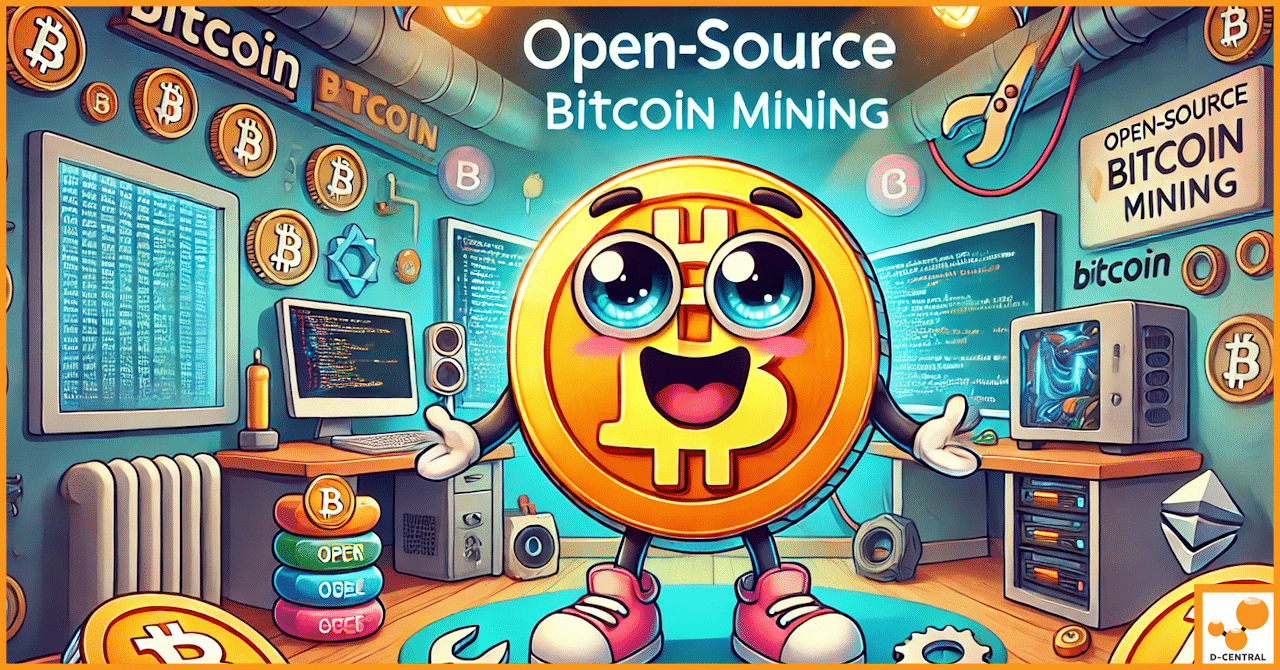
Transforming Golf Courses: How Bitcoin Mining’s Waste Heat Can Cut Heating Costs
Bitcoin mining is the computational process that validates and secures transactions on the Bitcoin blockchain. This process requires the use
4479 Desserte Nord Autoroute 440, Laval, QC H7P 6E2

Discover how community-driven innovation is transforming Bitcoin mining, promoting transparency, decentralization, and accessibility for all. This comprehensive guide explores the evolution of Bitcoin mining, the rise of open-source development, its impact on the cryptocurrency landscape, and the challenges faced by the open-source community.
Bitcoin mining, the process by which new bitcoins are created and transactions are added to the blockchain, has undergone a remarkable transformation since its inception in 2009. This evolution reflects not only technological advancements but also the changing dynamics of the cryptocurrency ecosystem.
When Bitcoin was first introduced, mining could be done on standard personal computers using their central processing units (CPUs). This democratized approach allowed anyone with a computer to participate in the network and earn bitcoins. However, as Bitcoin gained popularity and its value increased, miners sought more efficient methods to gain a competitive edge.
Miners soon discovered that graphics processing units (GPUs) were significantly more efficient at performing the repetitive calculations required for Bitcoin mining. This shift to GPU mining marked the first major evolution in mining hardware, dramatically increasing the network’s hash rate and making CPU mining largely obsolete for Bitcoin.
Field-Programmable Gate Arrays (FPGAs) represented the next step in mining evolution. These customizable chips offered better performance and energy efficiency compared to GPUs, though their prominence in Bitcoin mining was relatively short-lived due to the rapid development of ASICs.
The introduction of Application-Specific Integrated Circuits (ASICs) in 2013 marked a turning point in Bitcoin mining. These chips, designed specifically for mining cryptocurrencies, offered unprecedented efficiency and hash rates. The advent of ASIC mining led to a profound shift in the mining landscape:
While ASIC mining has greatly enhanced the security and processing power of the Bitcoin network, it has also led to concerns about centralization, as the production of these specialized chips is concentrated among a few manufacturers.
The shift to ASIC mining has had profound implications for the Bitcoin ecosystem. On one hand, it has made the network more secure and efficient. On the other, it has raised concerns about the concentration of mining power and the potential for manufacturer influence over the network. This tension between efficiency and decentralization is at the heart of many ongoing debates in the cryptocurrency community.
As the Bitcoin mining industry became increasingly dominated by specialized hardware and large-scale operations, a countermovement emerged in the form of open-source development. This approach to mining software and hardware design aims to democratize access to mining technology and promote transparency in the ecosystem.
Open-source mining refers to the development and use of mining software and hardware whose designs and source code are publicly available. This approach allows anyone to inspect, modify, and enhance the technology, fostering a collaborative environment for innovation and improvement.
At the heart of the open-source mining movement lies CGMiner, one of the most influential and widely used mining software in the cryptocurrency industry. Developed by Con Kolivas in 2011, CGMiner has played a pivotal role in shaping the mining landscape.
CGMiner’s importance in the Bitcoin mining ecosystem cannot be overstated. It has become the de facto standard for mining software, powering a significant portion of the world’s mining operations. Its popularity stems from several key factors:
What many people might not realize is that CGMiner’s influence extends far beyond individual miners. In fact, it forms the backbone of the software used by many major ASIC manufacturers:
Despite its widespread use, CGMiner’s open-source nature has led to significant controversy in the industry. The software is released under the GNU General Public License (GPL), which requires that any modifications to the code must also be made open-source. However, many ASIC manufacturers have created proprietary forks of CGMiner without releasing their modifications, potentially violating the license terms.
This situation highlights the tension between open-source principles and commercial interests in the mining industry. It also underscores the challenges faced by the open-source community in enforcing licensing terms and ensuring that the benefits of collaborative development are shared across the ecosystem.
Despite the challenges, the open-source mining community continues to drive innovation and push for greater transparency in the industry. Several projects exemplify this spirit of collaboration and openness:
Bitaxe represents a new wave of open-source hardware in Bitcoin mining. This project provides high-performance ASIC miners with fully open designs, allowing users to not only use but also understand and modify their mining hardware.
Key features of Bitaxe include:
Nerdminer focuses on developing accessible and low-cost mining solutions, particularly for educational purposes and small-scale mining. By encouraging community contributions, Nerdminer has fostered the creation of innovative and user-friendly mining tools that lower the barriers to entry for newcomers to the mining space.
Several projects aim to develop open-source firmware for popular ASIC miners, providing alternatives to the proprietary software provided by manufacturers. These initiatives not only give miners more control over their hardware but also help ensure the longevity of mining equipment beyond the support period offered by manufacturers.
The rise of open-source mining is having far-reaching effects on the Bitcoin ecosystem:
While open-source mining offers numerous benefits, it also faces significant challenges:
Despite these challenges, the future of open-source mining looks promising. As the cryptocurrency community continues to value decentralization and transparency, open-source initiatives are likely to play an increasingly important role in shaping the future of Bitcoin mining.
Bitcoin mining is the process of creating new bitcoins and adding transactions to the blockchain by solving complex cryptographic puzzles. Miners use computational power to compete for rewards in bitcoins.
Bitcoin mining has evolved from individual miners using basic CPUs to large-scale operations with specialized ASICs (Application-Specific Integrated Circuits), increasing efficiency and centralizing the process.
Open-source mining promotes transparency, enables users to verify the safety and integrity of mining software/hardware, fosters community-reviewed security, rapid innovation, customization for optimized operations, and cost-effectiveness by eliminating licensing fees.
Open-source mining lowers barriers to entry, allowing more individuals and small operations to participate in mining. This helps distribute mining power more widely, reducing the influence of large mining corporations and enhancing the decentralization of the Bitcoin network.
CGMiner is one of the most widely used open-source mining software. It forms the basis for the software used by many major ASIC manufacturers, including Bitmain (Antminer), Canaan (Avalon), and MicroBT (Whatsminer). Its widespread adoption and open-source nature have made it a cornerstone of the Bitcoin mining industry.
Key challenges include enforcing open-source licensing terms, keeping pace with proprietary development, finding sustainable business models, and increasing awareness and adoption among miners.
Discover how you can leverage the power of community-driven innovation to enhance your Bitcoin mining operations and contribute to a more decentralized future.
DISCLAIMER: D-Central Technologies and its associated content, including this blog, do not serve as financial advisors or official investment advisors. The insights and opinions shared here or by any guests featured in our content are provided purely for informational and educational purposes. Such communications should not be interpreted as financial, investment, legal, tax, or any form of specific advice. We are committed to advancing the knowledge and understanding of Bitcoin and its potential impact on society. However, we urge our community to proceed with caution and informed judgment in all related endeavors.
Related Posts

Bitcoin mining is the computational process that validates and secures transactions on the Bitcoin blockchain. This process requires the use

Discover how combining solar energy with Bitcoin mining can revolutionize your home setup, reduce costs, and contribute to a sustainable

In the world of cryptocurrency mining, ASIC miners are powerful tools that can significantly boost profits. Crypto mining, especially with